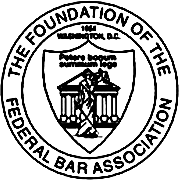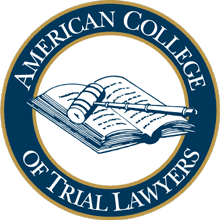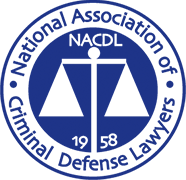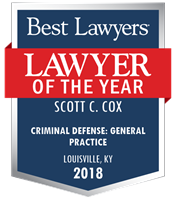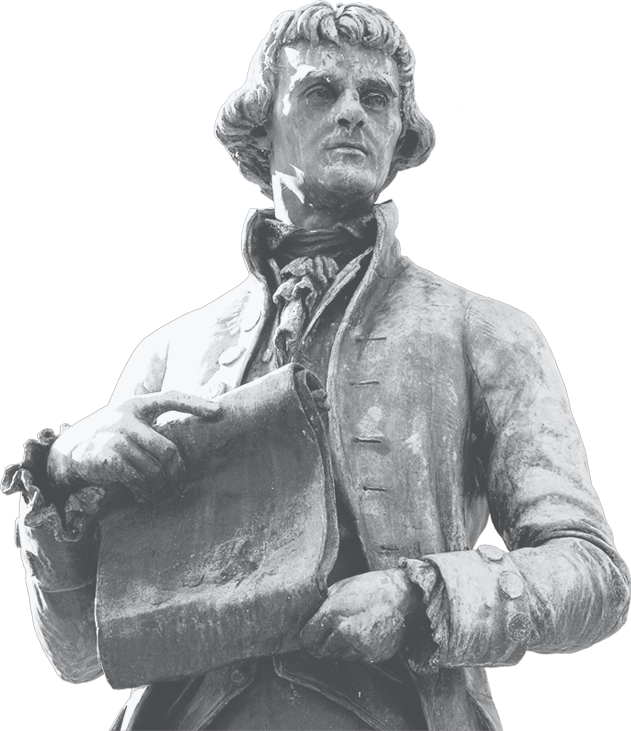Brief for Appellee Bertrand Howlett - Case 2010-SC-000128-CL
Commonwealth of Kentucky
Supreme Court of Kentucky
2010-SC-000128-CL
Commonwealth of Kentucky - Appellant
v.
Bertrand Howlett - Appellee
Brief for Appellee, Bertrand Howlett
Submitted by:
Paul S. Gold
701 West Jefferson Street
Louisville, Kentucky 40202
Michael R. Mazzoli
Cox & Mazzoli PLLC
600 West Main Street, Suite 300
Louisville, Kentucky 40202
Certificate
The undersigned does hereby certify that copies of this brief were served upon the following named individuals by United States mail on August 16, 2010: Hon. Donald E. Armstrong, Jefferson District Court, Jefferson Hall of Justice, 600 W. Jefferson Street, Louisville, Kentucky 40202; Ben Wyman, Assistant County Attorney, 600 W. Jefferson Street, Louisville, Kentucky 40202. The undersigned does also certify that the record on appeal has been returned to the Jefferson District Court Clerk before this date. _____________________________
Michael R. Mazzoli
Certification of Law from the Jefferson District Court
Action No. 06-T-088131
Statement Concerning Oral Argument
The Court’s Order of May 10, 2010, advised that the case would stand submitted on the briefs, without oral argument.
Counterstatement of Points and Authorities
When certifying the law on the Commonwealth’s motion after an acquittal, this Court determines the proper construction of a statute or rule, not whether the application of the law was strictly correct in the particular case.
Commonwealth v. Wirth, 936 S.W.2d 78 (Ky. 1996) ......................................................................................... 9
Smith v. Massachusetts, 543 U.S. 462 (2005) ................................................................................................. 9
KRE 201 defines the facts that qualify for judicial notice. KRE 201 ................................................................... 10
KRE 201 codifies the common law of judicial notice; applies equally to jury- and bench-trials; and permits a judge to take notice of a fact sua sponte, at the end of trial, and without prior notice to the parties. KRE 201.................. 10-11
Doe v. Golden & Walters, PLLC, 173 S.W.3d 260 (Ky. App. 2005).................................................................... 10
Robert G. Lawson, The Kentucky Evidence Law Handbook, (4th ed. 2003) ........................................................ 10
A judge may take judicial notice of a fact that comes from the judge’s personal knowledge, provided the noticed fact satisfies KRE 201(b)’s requirements. KRE 201 ............................................................................................ 12-14
Clay v. Commonwealth, 291 S.W.3d 210 (Ky. 2008) .................................................................................... 13-14
The manufacturer’s manual for the Intoxilyzer 5000EN is an “authoritative source” for judicially-noticed facts.
Clay v. Commonwealth, 291 S.W.3d 210 (Ky. 2008) ....................................................................................... 15
KRE 201 ..................................................................................................................................................... 15
KRS 189A.103(4) ......................................................................................................................................... 15
A belch or burp is an “oral … intake of substances which will affect the [breathalyzer] test,” and such an occurrence requires the application of a new twenty-minute observation period.
Commonwealth v. Roberts, 122 S.W.3d 524 (Ky. 2003) .................................................................................. 16
KRS 189A.103 ......................................................................................................................................... 16-17
500 KAR 8:030 ........................................................................................................................................ 16-17
Eldridge v. Commonwealth, 68 S.W.3d 388 (Ky. App. 2001)......................................................................... 17-18
Intoxilyzer 5000EN: Breath Analysis Instrument Operator’s Manual (Kentucky Model) ................................. 17, 22-24
Stanley Billingsley and Wilbur Zevely, Kentucky Driving Under the Influence Law (2001)................................. 18-19
Litteral v. Commonwealth, 282 S.W.3d 331 (Ky. App. 2008)............................................................................ 18
People v. Bertsch, 538 N.E.2d 1306 (Ill. App. Ct. 1989) .................................................................................. 19
State v. Nelson, 399 N.W.2d 629 (Minn. Ct. App. 1987).................................................................................. 19
Kramer v. Commissioner of Public Safety, 706 N.W.2d 231 (Minn. App. 2005).................................................. 19
Bennett v. State, 206 P.3d 505 (Idaho Ct. App. 2009) ..................................................................................... 20
In re Mahurin, 99 P.3d 125 (Idaho Ct. App. 2004) ........................................................................................... 20
Idaho State Police, Standard Operating Procedure, Breath Alcohol Testing (2009) ............................................ 20
Virginia Department of Forensic Science, Breath Alcohol Section, Breath Test Operator Instructional Manual, Intoxilyzer Model 5000 (2005) ................................................................................................................... 21-22
Clay v. Commonwealth, 291 S.W.3d 210 (Ky. 2008) ....................................................................................... 22
Counterstatement of the Case
An application of the judicial notice doctrine figured in the chain of factual findings that led Jefferson District Judge Donald E. Armstrong to acquit appellee Betrand Howlett of driving under the influence of alcohol. Mr. Howlett testified that he had burped during the twenty-minute observation period preceding his breathalyzer test, and when Judge Armstrong considered the effect that this might have had on the test’s validity, he took notice that “a burp during the observation time” requires the test administrator “to start the observation time all over again….” (Colloquy, Video Record (VR) 01/26/10 at 12:19:00.) To illuminate the basis and methodology for Judge Armstrong’s decision, a few matters “essential to a fair and adequate statement of the case” require brief mention. See CR 76.12(4)(d)(iii).
Mr. Howlett was arrested at about 4:00 a.m. on November 26, 2006. (Williams, VR 01/26/10 at 02:11:00.) By the time of his arrest, he had been awake nearly twenty-four straight hours. (B.Howlett, VR 01/26/10 at 06:05:30.) He had drunk six beers during that time (id. at 06:01:00), beginning at 1:00 p.m. on the 25th, when he and a friend met to watch the University of Kentucky play Tennessee in football. (Id. at 05:55:00.) He had two beers during the game, at the conclusion of which he joined his girlfriend (now his wife), Ashley, to do some shopping. (Id. at 05:57:30.) At 8:00 p.m., he and Ashley hosted a card game for several friends at his home; between 9:00 and midnight, he had two more beers. (Id. at 05:59:00.) Mr. Howlett then drove the group to a nearby establishment, Brendan’s Restaurant and Pub, where he had two more drinks between midnight and about 3:55 a.m. on November 26. (Id. at 06:00:00.) (Ashley drank two glasses of wine in the eight hours following 8:00 p.m. (A.Howlett, VR 01/26/10 at 05:52:00.)) On the drive home, a transmitter connecting Mr. Howlett’s Ipod and car stereo came undone, and when he leaned over to remedy the problem, his car swerved briefly. (Id. at 05:48:00; B.Howlett, VR 01/26/10 at 06:01:00.) At that moment, Saint Matthews Police Department Sergeant Steve Williams, who’d been following Mr. Howlett for a few blocks, signaled orders to stop, and Mr. Howlett pulled off into a shopping center parking lot. (Williams, 01/26/10 at 02:11:00.)
Sergeant Williams testified that Mr. Howlett “appeared to have bloodshot eyes,” and said he “noticed the smell of alcohol” coming from the automobile. (Williams, 01/26/10 at 02:11:00.) Mr. Howlett admitted having “a few drinks at Brendan’s bar,” Sergeant Williams added. (Id.) Over the noise of a nearby street-sweeper, he asked Mr. Howlett to say the alphabet from “D” to “R”; Mr. Howlett recited the letters in correct order, but stopped on the letter “T.” (Id. at 02:15:00; B.Howlett, VR 01/26/10 at 06:01:20.) (Mr. Howlett testified that, in the racket caused by the street-sweeper, he thought Sergeant Williams had instructed him to stop at “T.” (B.Howlett at 06:02:00, 06:10:00.)) Sergeant Williams ordered Mr. Howlett out of his car and had him perform a “one-leg stand” test (balance on one leg and count from “one-thousand-and-one” to “one-thousand-and-thirty”); Mr. Howlett managed to satisfy all but one of the criteria (he held his hands to his side for a moment). (Williams, 01/26/10 at 02:14:00.) Finally, Sergeant Williams told Mr. Howlett to perform the “walk-and-turn” balancing test: walk nine paces along an imaginary line, heel-to-toe, hands at the side, counting out loud, then “leave his lead foot on the line, and then with his other foot, take a series of small steps while making a turn, and then to continue back nine steps the other way.” (Id. at 02:14:30-02:15:40.) Mr. Howlett managed to satisfy all but two criteria: he moved out of the heel-to-toe stance for a moment while Sergeant Williams was describing the test, and took one of his feet off the imaginary line during the turn. (Id.) All the same, Mr. Howlett was arrested and taken to jail.
Officer Thomas Woods, breath test administrator for the Louisville Metro Corrections Department, was on duty when Mr. Howlett arrived at the jail shortly after 4:00 a.m. on November 26, 2006. (Woods, VR 01/26/10 at 05:11:00 and 05:13:00.) Officer Woods said that he began Mr. Howlett’s twenty-minute observation period at 4:26 a.m. (Id. at 05:14:00 and 05:20:00.) He explained that “[t]he state requires that you do a twenty minute observation period from the time they’re there to confirm that there’s nothing in their mouth or nasal passages.” (Id. at 05:20:10.) During that time, in accordance with protocol, Officer Woods “begins to complete [the suspect’s] paperwork….” (Id. at 05:13:50.) The prosecutor did not inquire into Mr. Howlett’s physical condition during the observation stage:
Q (Mr. Wyman): What time did your observation period begin?
A: Zero-four-twenty-six hours, sir.
Q: When was the test administered?
A: The test was administered at zero-four-fifty-one.
Q: Was that, was that, twenty minutes?
A: Yes sir, it was.
(Id. at 05:20:20.) The breathalyzer registered 0.150 when the test was conducted. (Id. at 05:18:30.)
Later testimony revealed that Mr. Howlett had a longstanding physical condition in 2006 that caused him to belch frequently after drinking alcohol. Ashley Howlett testified that ingesting alcohol caused him to “burp[] quite a bit,” a condition that could “go on for a long period of time.” (A.Howlett, VR 01/26/10 at 05:51:20.) These belches were not always audible: “He tries to be discreet about it,” she said. (Id. at 05:51:30.) The prosecutor asked Mrs. Howlett to elaborate about the condition during cross-examination:
Q (Mr. Wyman): This situation you described, where he tends to burp a lot when he consumes beer, is that correct? Does it happen when he consumes any other alcoholic beverage?
A: He burps, with or without alcohol. Certain foods –
Q: So it’s a chronic thing.
A: Right.
(Id. at 5:52:45.)
Mr. Howlett himself acknowledged that “[t]he belching is a problem,” becoming “more prevalent” and happening “more frequently” when he drinks beer. (B.Howlett, VR 01/26/10 at 06:08:00.) “And that was happening” during the observation period on November 26, 2006, he affirmed, “not to the point of vomiting, but I could feel the sensation of [vomiting] coming on.” (Id. at 06:08:15.) He doubted that the belching was audible: “I wasn’t making it known to everybody around.” (Id. at 06:08:30.) The prosecutor did not challenge any of this testimony on cross-examination. (See id. at 06:09:29 to 06:14:10.)
Mr. Howlett adamantly denied having driven his car under the influence of alcohol. (B.Howlett, VR 01/26/10 at 06:09:00.) Ashley Howlett likewise insisted that he had not been intoxicated. (A.Howlett, VR 01/26/10 at 05:51:00.) She swore that she would not have gotten in the car if she’d thought Mr. Howlett was affected by drink (id. at 05:52:00), and Mr. Howlett declared that he “absolutely [would] not” have gotten behind the wheel if he had doubted his sobriety. (B.Howlett, VR 01/26/10 at 06:09:00.)
The validity of the breathalyzer test thus became the most hotly-contested aspect of the trial. Recalling Mr. Howlett’s testimony about belching during the observation period before the breath test, the defense argued that “if that’s the case, the validity of the intoxilyzer would be compromised.” (Colloquy, VR 01/26/10 at 06:20:00.) The prosecutor objected, insisting that there had been “no proof regarding the significance of belching ... prior to the administration of a breathalyzer test....” (Id. at 06:20:15.) Judge Armstrong noted the objection, but allowed defense counsel’s argument, calling it a “reasonable comment on the evidence that was presented.” (Id. at 06:21:15.) The prosecutor returned to the issue in his closing argument, not to dispute the significance of a belch during the observation period, but to call into question the testimony that Mr. Howlett had, in fact, belched:
Regarding the “fifteen” reading, there is a defense that the defendant burped while he was in the BA lab. Is it not interesting that when Officer Woods was on the stand, he was never questioned once about whether or not he observed the defendant belch. The question wasn’t asked. I wonder why.
(Id. at 06:27:50.)
Notwithstanding the prosecutor’s claim that the “proof was uncontroverted” and that the Commonwealth was “clear over the hurdle” of reasonable doubt (see colloquy, VR 01/26/10 at 06:27:50 and 06:28:15), Judge Armstrong expressed a more tentative view of the case, right from the outset of his deliberations: “I’ve always said that one of the things about trials is we never try dead-bang winners, they’re always close calls one way or the other.” (Id. at 06:28:35.) After retiring for about thirty minutes to consider the case, Judge Armstrong reconvened the parties to tell them he wished to devote more time to the task.
“I know that ... both parties think that this is a relatively easy case,” he said, “but in my interpretation of the case there’s a whole lot of nuances that, to tell you the truth, I’m not ready to rule on right now.”
(Id. at 06:56:15.)
When the proceedings resumed the next day, Judge Armstrong revealed that he had no doubt that Mr. Howlett had been operating a motor vehicle and that his breath test reading was well above the statutory threshold. (Colloquy, VR 01/27/10 at 12:15:00.) A different factor had proved to be the decisive one, though.
“I practiced law for twenty-three years before I became a judge,” he began, “and during that twenty-three years I was a county attorney for two years ... in arraignment court, and for six years I was the DUI prosecutor in [Jefferson District division]103.” (Colloquy, VR 01/27/10 at 12:17:00.) The time spent as prosecutor required frequent, regular study of the manufacturer’s instructions for the Intoxilyzer 5000 testing unit: “I’ve read and reread the manual on the breathalyzer 5000….” (Id.) “And so my problem was this,” he explained: “I do, as the trier of fact, find that Mr. Howlett burped during the twenty minute period that he was ‘being observed’.” (Id.) Judge Armstrong said he knew, from his prior readings of the Intoxilyzer manual, that a belch during the observation period could be significant, “[b]ut … I wasn’t sure that I could take judicial notice of the fact [based on] my personal knowledge of how the machine works and what the machine does and how it does it, because it’s not something that’s general knowledge….” (Id. at 12:18:00.) But when he reviewed the judicial notice standard in KRE 201, he continued, he confirmed that “judicial notice can be [a fact] ... capable of accurate and ready determination by resort to sources whose accuracy cannot reasonably be questioned….” (Id. (quoting KRE 201(b)(2).)
Based on KRE 201’s language, Judge Armstrong concluded that he could take judicial notice of a fact that could be verified by reference to the manufacturer’s instructions. “I take judicial notice of the fact that a burp during the observation time needs to start the observation time all over again, [according to] the manufacturer of the machine, Smith & Wesson [sic – should be CMI, Inc.].” (Colloquy, VR 01/27/10 at 12:19:00.) Given his finding that Mr. Howlett had belched during the observation period before the breath test, and considering the adverse effect of a burp on the test’s validity, Judge Armstrong could not muster enough confidence in the test to find Mr. Howlett guilty: “[T]he question that I had was, if I’m having this much trouble with it, then there must be reasonable doubt as to [the charge of] operating a motor vehicle under the influence, therefore I cannot find him guilty of that.” (Id.)
The prosecutor voiced no objection to the court’s judicial notice ruling. (Id. at 12:19:15 to 12:21:10.) There was time to do so: the proceedings continued for another several minutes, during which time Judge Armstrong openly recognized that the Commonwealth might wish to challenge his decision. (Id.)
The law forbids the Commonwealth from appealing an acquittal, and Judge Armstrong’s verdict in favor of Mr. Howlett cannot be disturbed by subsequent litigation. Commonwealth v. Wirth, 936 S.W.2d 78, 79 (Ky. 1996) and Smith v. Massachusetts, 543 U.S. 462, 467 (2005). This matter is accordingly before the Court for the narrow purpose of deciding whether Kentucky’s law on judicial notice, as codified in KRE 201, requires formal clarification as to “the use of a judge’s taking judicial notice of a fact that comes from the judge’s personal knowledge....” (Commonwealth’s Motion for Certification of Law at pg. 1; Order of 05/20/2010 Granting Certification.)
Argument
The Court’s foremost purpose in certification proceedings is “to determine the proper construction” of a statute or rule. See Wirth, 936 S.W.2d at 79. The very nature of the task means that the Court’s decisions must invariably apply far beyond the parameters of the particular lawsuit before the Court. In a case like ours, where the question concerns the interpretation of a rule of evidence, the Court’s ruling will ultimately govern nearly all litigation in Kentucky, civil and criminal, and apply to cases at immense removes from Mr. Howlett’s drunk driving prosecution. Indeed, it can be said that the Court’s decision here will govern every case in Kentucky except Mr. Howlett’s. See id. Strictly speaking, then, the Court’s chief interest in this matter is to decide how all judges in all cases in Kentucky may exercise their authority under the judicial notice doctrine in KRE 201, not whether the authority was properly exercised by the particular judge in this particular case. The merits of Judge Armstrong’s specific ruling deserve discussion, to be sure, but the better starting point should be a broader examination of the scope of judicial discretion under KRE 201.
The rule specifically identifies the kinds of facts within the ambit of judicial notice. KRE 201(b). Only those facts “not subject to reasonable dispute” can be judicially noticed. Id. The rule recognizes two categories of facts which can qualify as “not subject to reasonable dispute”: (1) those which are “[g]enerally known within the county from which the jurors are drawn, or, in a nonjury matter, the county in which the venue of the action is fixed”; or (2) those which are “[c]apable of accurate and ready determination by resort to sources whose accuracy cannot reasonably be questioned.” Id.
“This provision merely codified the common law of Kentucky,” wrote the Court of Appeals a few years ago. Doe v. Golden & Walters, PLLC, 173 S.W.3d 260, 264 (Ky. App. 2005) (citing Robert G. Lawson, The Kentucky Evidence Law Handbook, § 1.00[5][d] at 19 (4th ed. 2003)). This fact should dispense with any need to decide the certified question in our case “[i]n light of KRE 201’s pre-Rules caselaw and its current Federal equivalent.” (See Commonwealth’s Motion for Certification at pg. 1.) Rather, it seems proper to trim off these qualifiers and ask the question more directly, by asking what KRE 201 itself allows.
Rule 201 applies, by its express terms, to jury- and bench-trials alike. See KRE 201(b). It is therefore unnecessary to ask, as the Commonwealth’s phrasing of the certified question asks, “what if any special prohibitions exist in a bench trial” regarding the court’s discretion to take judicial notice. (See Commonwealth’s brief at pg. 6 (emphasis added).) The “bench trial” emphasis reflects the Commonwealth’s evident displeasure that Judge Armstrong exercised his judicial notice authority “SU ASPONTE” (id. at pg. 5 [sic] (emphasis in original)), after the conclusion of the trial, without giving prior warning of his intention to do so. (Id. at pp. 5-6.) The Commonwealth seems to suggest that there is something especially unfair for a judge to do such things in a bench trial. (Id. at pp. 6, 7.) But KRE 201 explicitly allows precisely these things, regardless of the presence or absence of a jury. “A court may take judicial notice, whether requested or not,” KRE 201(c); and may do so “at any stage of the proceeding,” KRE 201(f); and may act “in the absence of prior notification” to the parties. KRE 201(e). It is therefore appropriate to decide the certified question without concern that there might be “special prohibitions in a bench trial.”
By paring away the unnecessary modifiers built into the Commonwealth’s phrasing of the certified question, the legal query might fairly be restated thus:
Can a judge take judicial notice of a fact that comes from the judge’s personal knowledge?
KRE 201 does not say that a judge may take judicial notice of things within his or her “personal knowledge.” But the rule does not say that matters within a judge’s “personal knowledge” can never qualify for judicial notice, either. KRE 201 says that all facts which are “[g]enerally known within the [proper] county” or “[c]apable of accurate and ready determination by resort to sources whose accuracy cannot reasonably be questioned” can be judicially noticed. KRE 201(b). Logically, then, a judge may take judicial notice of a fact “that comes from the judge’s personal knowledge,” provided the noticed fact is “[c]apable of accurate and ready determination by resort to sources whose accuracy cannot reasonably be questioned.” By the same token, if the personally-known fact does not fall within Rule 201(b)’s categories, the judge may not take judicial notice of the fact, even if the judge’s personal knowledge happens to be perfectly correct.
This distinction was illustrated by a moment of levity during the trial. Mr. Howlett testified that he met a friend at about noon on November 25, 2006, to watch the football game between Kentucky and Tennessee. (B.Howlett, VR 01/26/10 at 05:56:30.) Defense counsel asked, “And did you actually watch the Kentucky – did you say, ‘Tennessee’?” (Id.) “He said ‘Tennessee,’ “ Judge Armstrong interjected, “which means Kentucky lost.” (Id.) As those in the courtroom laughed, Mr. Howlett said, “I believe you’re right.” (Id.) “No, you don’t have to believe me,” Judge Armstrong said: “they haven’t beaten them in twenty years.” (Id.) “Judge, was that judicial notice?” the prosecutor asked. (Id. at 05:57:00.) “That was judicial notice,” Judge Armstrong responded. (Id.)
The fact that the University of Kentucky had been suffering a decades-long drought in its rivalry with Tennessee was obviously a fact “that [came] from the judge’s personal knowledge.” Nevertheless, it was a fact that was most certainly (and unfortunately) “[c]apable of accurate and ready determination by resort to sources whose accuracy cannot reasonably be questioned.” (Kentucky’s last victory against Tennessee came in 1984: see here.) The parties in Mr. Howlett’s trial obviously felt no need to consult Kentucky’s athletic history to verify the judge’s recollection. But if the fact had been important enough, and one of the parties doubted the judge was correct, that party could have challenged the judge’s decision by objecting, and an examination of Kentucky’s football records would have quickly revealed any inaccuracy in the judge’s “personal knowledge.” See Clay v. Commonwealth, 291 S.W.3d 210, 219-220 (Ky. 2008) (objection to erroneously-noticed fact).
The need for a contemporaneous objection brings us back to the matters of real substance in the present case. When Judge Armstrong exercised his judicial notice authority regarding the issue of the breath test’s validity, the prosecutor did not object. This casts an ironic light on the claim in the Commonwealth’s brief that, if a review of the authoritative sources had been conducted at the time, Judge Armstrong’s error would have been immediately manifest. (See Commonwealth’s brief at pp. 7-8.) The Commonwealth’s assurance on this point is misplaced, as will be demonstrated shortly – resort to the authoritative sources would actually have confirmed the fact that Judge Armstrong had judicially noticed. But the Commonwealth’s very certainty about the indisputable correctness of its position only amplifies the prosecutor’s failure to object: the Commonwealth’s brief can almost be understood to say that “if only the prosecutor had objected, the Commonwealth would have easily shown Judge Armstrong that he had erred.” This brings to mind a comment this Court made when addressing a similar complaint in Clay, 291 S.W.3d at 220:
[T]hough the trial court’s taking of judicial notice was improper, Appellant did not object to the trial court. Appellant argues on appeal that since judicial notice was taken immediately, there was no time for an objection. Perhaps there was not enough time to object before judicial notice was taken, but this fact does not affect the contemporaneous objection requirement of RCr 9.22. Appellant still could have -- and was required to -- object after judicial notice was taken in order to preserve this error for appeal.
Ibid.; see also KRE 201(e) (objection after judicial notice taken).
When Judge Armstrong took judicial notice that a belch may require a new twenty-minute observation period before a valid breath test can be performed, he said that he’d learned the fact from having “read and reread the manual on the breathalyzer 5000” during his years as a DUI prosecutor in the Jefferson County Attorney’s office. (Colloquy, VR 01/27/10 at 12:17:00.) His reference to the manufacturer’s instructions can be understood as a citation to what this Court has called an “authoritative source.” See Clay, 291 S.W.3d at 217, 219; see also KRE 201(b)(2). Such sources “include encyclopedias, calendars, maps, medical and historical treatises, almanacs, and public records.” Clay, 291 S.W.3d at 219 (quoting Lawson, Kentucky Evidence at § 1.00[3][c], at 10).
The manufacturer’s instruction manual for the Intoxilyzer 5000 is an “authoritative source” within the preceding definition. Like the encyclopedias and other materials listed, the operator’s manual is a “source[] anyone can look to for a relevant fact.” See Clay, 291 S.W.3d at 219. In addition, the manufacturer’s instructions are a public record by statutory mandate, KRS 189A.103(4), and a breath test cannot be deemed valid unless, among other necessary criteria, the test was “performed in accordance with the manufacturer’s instructions for the use of the instrument.” Ibid. It was not error, then, for Judge Armstrong to rely upon the Intoxilyzer 5000 manual as an authoritative source for a judicially-noticed fact. Indeed, the Commonwealth’s brief does not appear to contend otherwise: it argues instead that Judge Armstrong’s recollection of the manual was imperfect. (Commonwealth’s brief at pg. 11.) If anything, the Commonwealth agrees that Judge Armstrong had a satisfactory authoritative source for the judicially noticed fact, but complains that the source does not contain the precise fact noticed. But unfortunately, this redoubles the magnitude of the prosecutor’s failure to object when the purported error happened.
What if the prosecutor had objected? What if the prosecutor had challenged the accuracy of the fact that Judge Armstrong had judicially noticed -- that is, had challenged Judge Armstrong’s ruling on the merits?
This Court has specified that “the evidence necessary to lay the proper foundation for admission of a breath test” includes proof that “the certified operator have continuous control of the person by present sense impression for at least twenty minutes prior to the test,” during which time the operator must assure that “the subject did not have oral or nasal intake of substances which will affect the test.” Commonwealth v. Roberts, 122 S.W.3d 524, 528 (Ky. 2003); see also KRS 189A.103(3)(a) and 500 KAR 8:030(1)(1). “The clear purpose of the twenty-minute observation period,” the Court of Appeals explained a few years ago, “is to ensure that any residual alcohol present in the mouth has dissipated so that the Breathalyzer machine measures only the alcohol content of breath exhaled from the lungs.” Eldridge v. Commonwealth, 68 S.W.3d 388, 392 (Ky. App. 2001).
The statute and regulation do not use explicit terms like “regurgitate,” “vomit,” “belch,” or “burp” to specify what the breath test operator must watch for during the observation period. See KRS 189A.103(3)(a) and 500 KAR 8:030(1)(1). They use instead a categorical description: “oral or nasal intake of substances which will affect the test.” 500 KAR 8:030(1)(1), incorporated by KRS 189A.103(3)(a). The manufacturer’s instruction handbook for the “Kentucky Model” of the Intoxilyzer 5000EN uses the same terminology: “During [the observation] period the subject shall not have oral or nasal intake of substances which will affect the test.” (Appendix, Commonwealth’s brief, Intoxilyzer 5000EN: Breath Analysis Instrument Operator’s Manual (Kentucky Model), CMI Inc. (2000) at pg. 12.)
It will be recalled that Mr. Howlett testified that he belched during the observation period before his breath test, “not to the point of vomiting, but I could feel the sensation of [vomiting] coming on.” (B.Howlett, VR 01/26/10 at 06:08:00 - 06:08:15.) Judge Armstrong held, “as the trier of fact, … that Mr. Howlett burped during the twenty minute period that he was ‘being observed’.” (Colloquy, VR 01/27/10 at 12:17:00.) Thus, to determine whether Judge Armstrong’s exercise of judicial notice was correct – that is, whether a burp requires a new observation period – one must determine whether a burp is an “oral or nasal intake of substances which will affect the test.” And that question has already been answered by Kentucky’s courts.
Kentucky case law makes clear that a burp during the observation period calls for starting a new twenty-minute watch. “Belching and regurgitating may contaminate the mouth with alcohol volumes from the stomach,” wrote the Court of Appeals, “and this is a rational basis for re-administering the observation period.” Eldridge, 68 S.W.3d at 392 (emphasis added). A well-regarded treatise on Kentucky’s drunk driving statutes explains that “[t]he purpose of the [twenty-minute observation] rule is to prevent, by oral intake, burping, or regurgitating, the introduction of any material into the mouth of the suspect immediately prior to the test.” Stanley Billingsley and Wilbur Zevely, Kentucky Driving Under the Influence Law, § 9.06(B) at 77 (West Group, 2001) (emphasis added); see Litteral v. Commonwealth, 282 S.W.3d 331, 333-334 (Ky. App. 2008) (quoting, with approval, section of Billingsley and Zevely treatise regarding different aspect of twenty-minute rule). The treatise recommends that the breath test operator should be able to “testify that the test result was not affected by the defendant’s oral intake or bringing of stomach fluids or gases into the mouth through belching or regurgitating.” Billingsley and Zevely, § 9.06(B) at 78 (emphasis added). “A violation of the required observation period can occur,” the treatise continues, “when … the period of observation, although totaling twenty minutes or more, is interrupted by … the subject burping, regurgitating, or orally ingesting any material.” Id. at 79 (emphasis added).
The Kentucky Court of Appeals’ view regarding the adverse effect of belching during the breath test observation period is found in case law throughout the United States. The Illinois Appellate Court noted that “other jurisdictions have recognized that a belch which occurs during the 20-minute observation period prior to testing can skew the results of a breath test,” and announced that “‘belching’ [is] in the nature of an affirmative defense which tends to establish the inaccuracy of the breathalyzer results in spite of compliance with the departmental regulations for purposes of establishing admissibility.” People v. Bertsch, 538 N.E.2d 1306, 1308-1309 (Ill. App. Ct. 1989). Minnesota’s appellate court explained that “[t]he purpose of the observation period is to preclude the possibility that the testimony [regarding the accuracy of the breath test] may be affected by mouth alcohol, resulting from burping or vomiting.” State v. Nelson, 399 N.W.2d 629, 631 (Minn. Ct. App. 1987). (The Minnesota Court of Appeals recently reiterated the state’s rule, citing the requirement that “if the driver regurgitates or belches, the Intoxilyzer operator should wait an additional 15 minutes before administering the test.” Kramer v. Commissioner of Public Safety, 706 N.W.2d 231, 237 (Minn. App. 2005).) The courts in Idaho take the same view: “[T]he monitoring period is required in order to rule out the possibility that alcohol or other substances have been introduced into the subject’s mouth from the outside or by belching or regurgitation.” Bennett v. State, 206 P.3d 505, 508 (Idaho Ct. App. 2009). In that same case, the Idaho court noted that
The operator’s manual for the Intoxilyzer 5000 requires that the breath test subject be monitored immediately prior to administration of the breath test to assure that the subject did not smoke, ingest any substance, vomit or belch, because such actions could render the breath test inaccurate.
Ibid. (citing In re Mahurin, 99 P.3d 125, 127 (Idaho Ct. App. 2004) (emphasis added).
Although the manufacturer’s instructions on file in Kentucky for the Intoxilyzer 5000EN do not use the terms “belch” or “burp,” the operator manuals for the Intoxilyzer machine in at least two other States – both editions more recent than Kentucky’s – do specify that the occurrence of a “belch” or “burp” mandates a new observation period. The Idaho State Police manual for the Intoxilyzer 5000EN describes the protocol for the observation period as follows:
Prior to evidential breath alcohol testing, the subject must be monitored for fifteen (15) minutes. Any material which absorbs/adsorbs or traps alcohol should be removed from the mouth prior to the start of the 15 minute waiting period. During the monitoring period the subject should not be allowed to smoke, drink, eat, or belch/burp.
Idaho State Police, Standard Operating Procedure, Breath Alcohol Testing, § 3.1 (2009) at pg. 6 (boldface in original, italics added), available here. The Virginia Department of Forensic Science’s breath test manual for the Intoxilyzer 5000 says this:
Experiments have shown that residual mouth alcohol will be eliminated by normal body processes well within 20 minutes. For this reason, the subject must be observed for 20 minutes prior to providing a breath sample. Residual mouth alcohol contamination of a breath sample could occur in several ways other than from drinking an alcoholic beverage. First, the subject, who has alcohol in his/her stomach, could vomit and thus bring alcohol-bearing solids and liquid into the mouth cavity, producing residual alcohol. Second, a subject, who has alcohol in his/her stomach, could belch, bringing alcoholic vapor into the mouth.
Rinsing the mouth with water is not effective in eliminating mouth alcohol. Thus, when a drinking-driving subject has recently taken a drink, vomited, belched, or otherwise come in contact with alcohol, another 20-minute observation must be performed for the effects of any residual mouth alcohol to dissipate before a valid breath sample can be taken.
Virginia Department of Forensic Science, Breath Alcohol Section, Breath Test Operator Instructional Manual, Intoxilyzer Model 5000 (2005 ed.) at pg. 16 (emphasis added), available here. A few pages later, the manual cautions, “As a reminder: The operator should also remember to ask the subject, just prior to his giving a sample, if he/she has belched, burped or regurgitated during the observation time.” Id. at 18 (boldface in original, italics added). After asking this question, “the operator does not proceed with the test unless satisfied that the subject has not done so.” Id. at 26.
In view of all this, Judge Armstrong was entirely correct to take judicial notice that a burp during the observation period can produce an “oral … intake of substances which will affect the [breath] test.” Having found that Mr. Howlett, in fact, burped during the observation period before his breath test, it was fully understandable that Judge Armstrong had a reasonable doubt about the validity of the test, and thoroughly appropriate for him to acquit Mr. Howlett of drunk driving. Certainly, if the Commonwealth were a typical party on appeal, complaining about a decision to which it had not objected at trial, this Court could comfortably declare that there was no “palpable error” in anything Judge Armstrong did. See Clay, 291 S.W.3d at 220.
The Commonwealth’s brief makes a pair of factual mistakes when interpreting the Intoxilyzer operator’s manual. These require a moment’s discussion before closing.
The Commonwealth observes that the Kentucky edition of the Intoxilyzer manual includes the directive, “Furthermore, if the subject regurgitates, note the time and delay starting a breath test for at least an additional twenty minutes.” (Commonwealth’s brief, Appendix, Intoxilyzer 5000EN operator’s manual at pg. 12.) Certainly, one who regurgitates – “vomits up liquid”, as the Commonwealth’s brief defines the term (id. at 9) – has indisputably experienced an “oral … intake of substances which will affect the test.” The manual should not be understood, though, to say that only when a suspect vomits must the observation period start again. By its own terms, the manual provides that the operator must verify that the test subject has had no “oral or nasal intake of substances,” not merely that the subject has not vomited. (Proof that occurrences other than vomiting can interfere with the test is clear from the fact that “nasal intake” of substances can also affect the test, and “nasal intake” happens by means other than vomiting.) Indeed, the test operator at trial said it was his duty to confirm not just that the subject had not vomited, but that “there’s nothing in [the subject’s] mouth or nasal passages,” before conducting a breathalyzer test. (Woods, VR 01/26/10 at 05:20:10 (emphasis added).) Regurgitation is certainly one method of introducing substances into the mouth, but by no means the only method. In view of the multitude of warnings that the breath test is affected by belching and that the observation period must re-start upon such an occurrence – warnings found in Kentucky case law, in the opinions of other states’ courts, in scholarly treatises, and in other Intoxilyzer 5000 manuals – it is error for the Commonwealth’s brief to contend that nothing short of “vomit[ing] up liquid” can require a new observation period.
The Commonwealth also makes far too much of the Intoxilyzer 5000EN’s ability to detect residual mouth alcohol. The manufacturer’s manual advises that the machine “will stop the analysis” and return an “Invalid Sample” error message “if the instrument detects residual mouth alcohol.” (Commonwealth’s brief, Appendix, Intoxilyzer 5000EN operator’s manual at pg. 8) (emphasis added).) The manual does not say, or even imply, that the equipment can infallibly identify alcohol concentrations due to a belch or burp (or regurgitation, for that matter): rather, it says only that if residual mouth alcohol is detected, the machine will alert the operator. Presumably, if the equipment were perfectly fail-safe, the various manuals for CMI Inc.’s Intoxilyzer 5000 would say so expressly, and would not require any observation period or tell operators to verify that the “subject shall not have oral or nasal intake of substances which will affect the test” (see id. at pg. 12) – the task of determining the presence of residual mouth alcohol could be left to the machine. But the manufacturer’s instructions have uniformly declined to make so extravagant a claim about the equipment’s sophistication. Indeed, it appears that the only place in all the United States where the claim has ever been made is page 10 of the Commonwealth’s brief. (Of course, even if CMI became so confident in its equipment’s perfection that it removed the observation period from its manufacturer’s instructions, operators in Kentucky would still be required to perform the task, because the Justice Cabinet’s regulations make it mandatory. 500 KAR 8:030(1)(1).)
Conclusion
Mr. Howlett asks the Court to certify the law of Kentucky as follows: A judge may take judicial notice of a fact that comes from the judge’s personal knowledge if the fact meets the criteria of KRE 201(b), that is, if the fact is “not subject to reasonable dispute in that it is either:(1) Generally known within the county from which the jurors are drawn, or, in a nonjury matter, the county in which the venue of the action is fixed; or (2) Capable of accurate and ready determination by resort to sources whose accuracy cannot reasonably be questioned.”
Respectfully submitted,
Paul S. Gold
701 West Jefferson Street
Louisville, Kentucky 40202
Michael R. Mazzoli
Cox & Mazzoli PLLC
600 West Main Street, Suite 300
Louisville, Kentucky 40202
Counsel for Respondent Howlett



